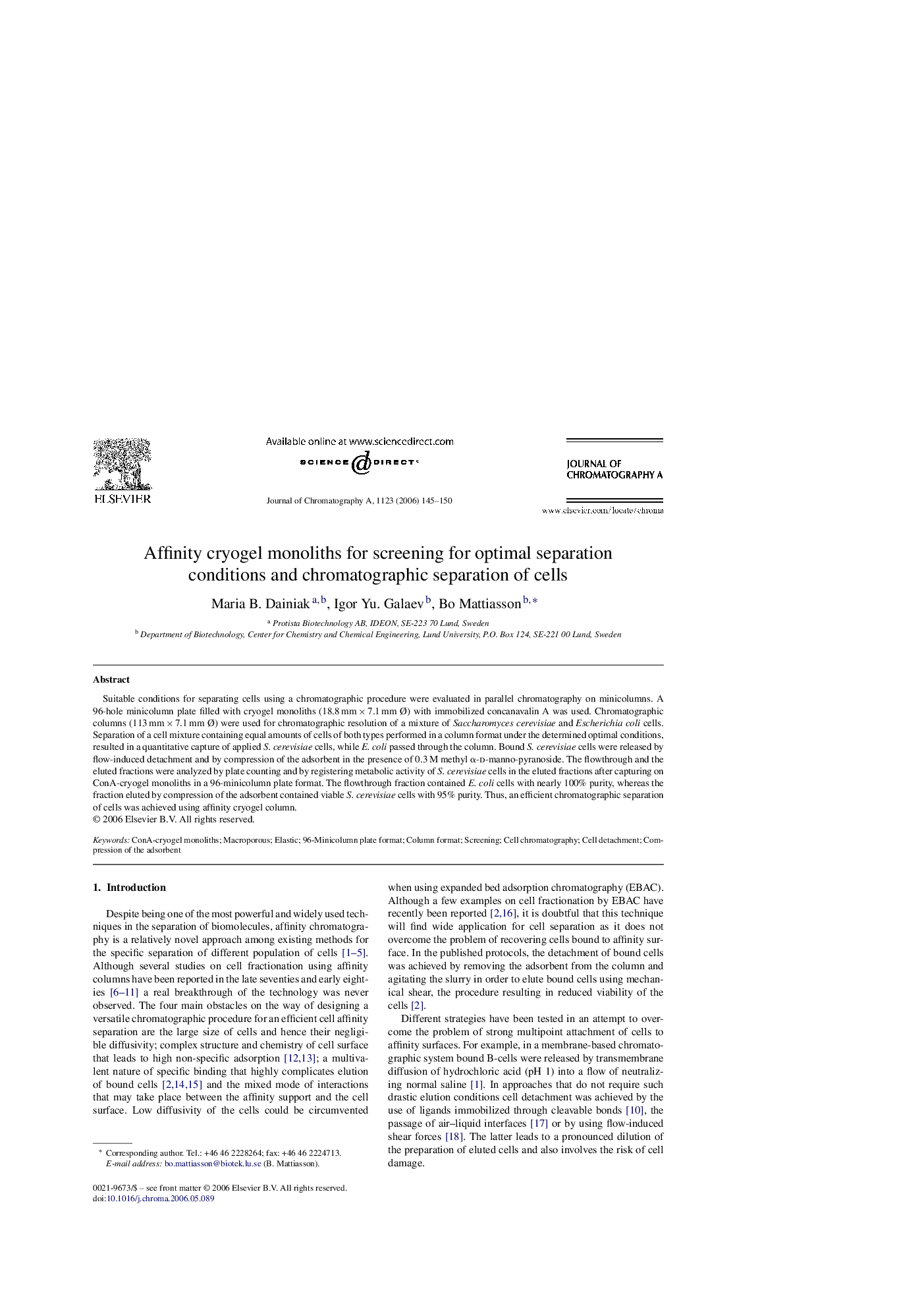| Article ID | Journal | Published Year | Pages | File Type |
|---|---|---|---|---|
| 1208784 | Journal of Chromatography A | 2006 | 6 Pages |
Suitable conditions for separating cells using a chromatographic procedure were evaluated in parallel chromatography on minicolumns. A 96-hole minicolumn plate filled with cryogel monoliths (18.8 mm × 7.1 mm Ø) with immobilized concanavalin A was used. Chromatographic columns (113 mm × 7.1 mm Ø) were used for chromatographic resolution of a mixture of Saccharomyces cerevisiae and Escherichia coli cells. Separation of a cell mixture containing equal amounts of cells of both types performed in a column format under the determined optimal conditions, resulted in a quantitative capture of applied S. cerevisiae cells, while E. coli passed through the column. Bound S. cerevisiae cells were released by flow-induced detachment and by compression of the adsorbent in the presence of 0.3 M methyl α-d-manno-pyranoside. The flowthrough and the eluted fractions were analyzed by plate counting and by registering metabolic activity of S. cerevisiae cells in the eluted fractions after capturing on ConA-cryogel monoliths in a 96-minicolumn plate format. The flowthrough fraction contained E. coli cells with nearly 100% purity, whereas the fraction eluted by compression of the adsorbent contained viable S. cerevisiae cells with 95% purity. Thus, an efficient chromatographic separation of cells was achieved using affinity cryogel column.
